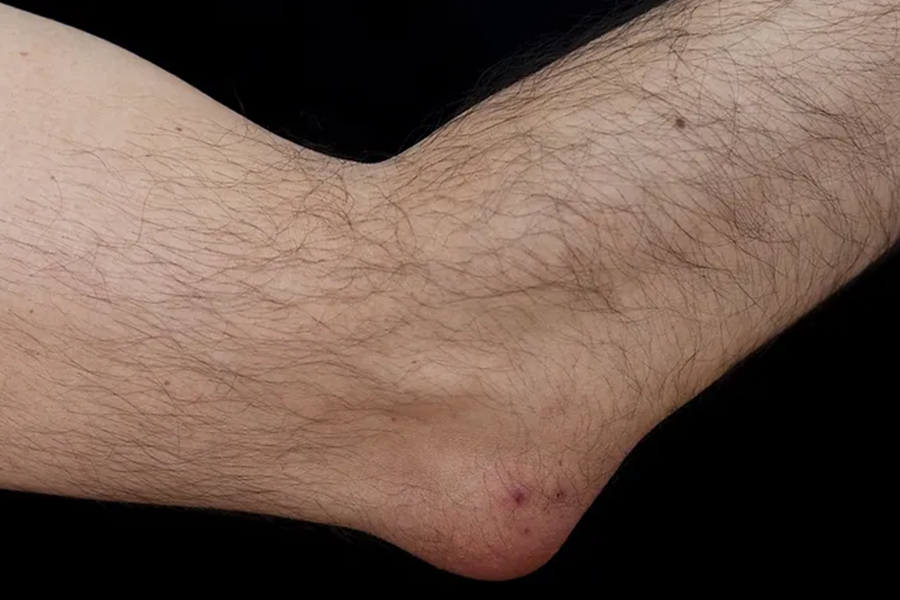Bursitis
Bursitis is a painful condition that involves inflammation of a bursa, which is a small, fluid-filled sac that acts as a cushion and reduces friction between bones, tendons, and muscles near joints. Bursae are found throughout the body, typically in areas where friction is common, such as the shoulders, elbows, hips, knees, and heels.
The most common cause of bursitis is repetitive motion or overuse of a joint, which can lead to irritation and inflammation of the bursa. Other factors that can contribute to bursitis include trauma, infection, gout, rheumatoid arthritis, and certain underlying medical conditions.
Symptoms
Common symptoms of bursitis include:
- Pain: Bursitis typically causes localized pain, which may be sharp or dull. The pain often worsens with movement or pressure on the affected area.
- Swelling: Inflammation of the bursa can lead to swelling in the affected joint.
- Redness: The affected area may appear red and warm to the touch.
- Limited Range of Motion: Bursitis can restrict the normal range of motion in the joint.
- Stiffness: Some people with bursitis may experience stiffness in the affected joint, especially in the morning or after periods of inactivity.
Diagnosis
Diagnosis of bursitis usually involves a physical examination by a healthcare provider and, in some cases, imaging studies such as X-rays, Ultrasound scans or MRI scans to rule out other possible causes of pain and swelling.
Treatment
Treatment for bursitis typically involves conservative measures, including:
- Rest: Avoiding activities that exacerbate symptoms and giving the affected joint time to heal.
- Ice: Applying ice to the affected area to reduce inflammation and pain.
- Nonsteroidal Anti-Inflammatory Drugs (NSAIDs): Over-the-counter or prescription medications like ibuprofen or naproxen can help reduce pain and inflammation.
- Physical Therapy: A physical therapist can provide exercises and stretches to improve joint mobility and strength.
- Steroid Injections: In some cases, a healthcare provider may inject a corticosteroid medication into the bursa to reduce inflammation and pain.
- Antibiotics: If bursitis is caused by a bacterial infection, antibiotics may be prescribed.
- Aspiration: In some cases, a healthcare provider may use a needle and syringe to remove excess fluid from the inflamed bursa.
- Surgery : Excision of bursae is usually the permanent remedy to chronic bursitis of any joint. Surgery is rarely necessary for bursitis and is typically considered only if other treatments have been ineffective or if there is a significant underlying problem.
Examples of common bursitis include olecranon bursitis of the elbow, yes-anserinus bursitis of the knee and retro-calcaneal bursitis of the heel
With proper treatment and rest, most cases of bursitis improve within a few weeks to a few months. However, it's important to take our or any other healthcare providers opinion for an accurate diagnosis and appropriate management.

